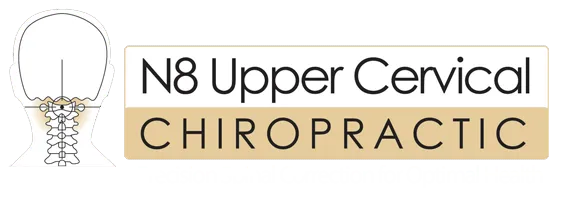 Vertigo is the sensation that you or the environment around you is rocking or spinning while you are actually staying perfectly still. Children often like to create self-induced vertigo by spinning in circles repeatedly until they feel dizzy. This type of vertigo only lasts for a few minutes and then goes away. Unfortunately, when vertigo happens as result of an injury or simply occurs spontaneously, it can last for several hours or days.
Vertigo is the sensation that you or the environment around you is rocking or spinning while you are actually staying perfectly still. Children often like to create self-induced vertigo by spinning in circles repeatedly until they feel dizzy. This type of vertigo only lasts for a few minutes and then goes away. Unfortunately, when vertigo happens as result of an injury or simply occurs spontaneously, it can last for several hours or days.
The Inner Ear
Sound waves enter the outer ear canal and travel to the eardrum where they are turned into vibrations. These vibrations are transmitted through the inner ear by three tiny bones -- the incus, stapes, and malleus -- to the cochlea and then to the vestibular nerve. The vestibular nerve relays these signals to the brain. Another component of the inner ear is the semicircular canals that are positioned at right angles to each other. They are lined with sensitive cells that act as a gyroscope for the body. This arrangement, along with the hair cells lining the canals, gives instant feedback to the brain about where we are in our environment. If something is not working as it should in this area, then vertigo ensues.
Symptoms of Vertigo
As mentioned, vertigo is a false sense of movement, particularly spinning. Such things as moving the head too fast or rolling over in bed can bring about vertigo or make it much worse. The symptoms are not the same as feeling lightheaded or fainting. Some common symptoms are:
Nausea and vomiting
Nystagmus -- abnormal eye movement
Imbalance
Headache
Sweating
Ringing in the ears
Hearing loss
Why Vertigo Happens
Vertigo can come about for a variety of different reasons. Vertigo is either peripheral or central.
Central vertigo: This comes from a problem in the brain or spinal cord.
Peripheral vertigo: This occurs due to a problem of the inner ear.
Sometimes the inner ear becomes inflamed because of illness. Small stones called crystals are present in the inner ear. If these happen to move out of place, they can lead to irritation of the small hair cells in the semicircular canals. This causes what is one of the most common reasons for vertigo: benign paroxysmal positional vertigo.
To learn more about the connection between head and neck injuries and vertigo download our complimentary e-book How to Naturally Relieve Vertigo without Drugs by clicking the image below:
Meniere’s disease is another reason for the onset of vertigo. It is known for:
Hearing loss
Tinnitus -- ringing in the ears
Vertigo
It is due to an abnormal buildup of fluid in the inner ear. It is not known exactly why this fluid accumulates.
A few other reasons vertigo may occur are due to:
Head or neck injuries
Strokes
Multiple sclerosis
Tumors
Migraines
Who Is at Risk of Developing Vertigo?
Some people may have a higher chance of developing vertigo than others. Here are some things putting you at risk:
Head and neck injuries
Taking aspirin or medication for blood pressure or depression
High blood pressure
Diabetes
Heart disease
Smoking
Drinking alcohol
Being an older woman
Studies Show Upper Cervical Care Can Help Vertigo
Case studies have been performed that prove the effectiveness of upper cervical chiropractic care. Let’s look at the outcomes of these studies.
One study examined 139 people who suffered from vertigo due to Meniere’s disease. Meniere’s, as previously mentioned, has vertigo as one of its main components. The participants in this study all recalled having some type of injury or trauma to the head or neck before the onset of Meniere’s. Most of these were due to automobile accidents. Upon examination, it was discovered at all 139 did indeed have some type of misalignment in the top bones of their cervical spine, either the C1 or C2 vertebrae. Each of the participants was given an adjustment by an upper cervical chiropractor. Out of the 139, 136 showed remarkable improvement, and some saw their vertigo entirely resolve in only a few adjustments.
The second study involved 60 patients that were diagnosed with vertigo. Out of the 60, as many as 56 recalled some type of trauma to their head or neck. These included auto accidents, sporting accidents (skiing, biking, or horseback riding), and falls down stairs or on icy sidewalks. Once again, upon examination, each one was found to have a misalignment in the top two bones of the neck. Within 1 to 6 months of care, all of them were seeing improvement. In fact, 48 saw their vertigo go away completely. The remaining 12 saw great improvement.
This information clearly shows us there is a direct link between misaligned bones in the upper neck and vertigo. This is very likely the underlying cause of vertigo.
Finding Natural Relief for Vertigo
The atlas (C1) vertebra sits just beneath the base of the skull making it very susceptible to misaligning when you endure a trauma to the head or the neck. The C1 is designed to protect the brainstem but when it misaligns, the opposite becomes true. It now puts the brainstem under stress and causes it to send improper signals to the brain about the body’s locations. When the brain receives these signals along with contradicting signals from the eyes and ears, vertigo can be the end results.
As upper cervical chiropractors, we use a gentle method that allows the bones to move back into place more naturally. We do not rely on popping or cracking the spine to get results. This allows for a longer lasting adjustment leading to fewer visits to our office later on. Many see their vertigo improve just as those in the above studies did.
To schedule a consultation with N8 Upper Cervical Chiropractic clinic, call (02) 8553-6218 or just click the button below.
If you are outside of the local area, you can find an Upper Cervical Chiropractor near you at www.uppercervicalawareness.com.


